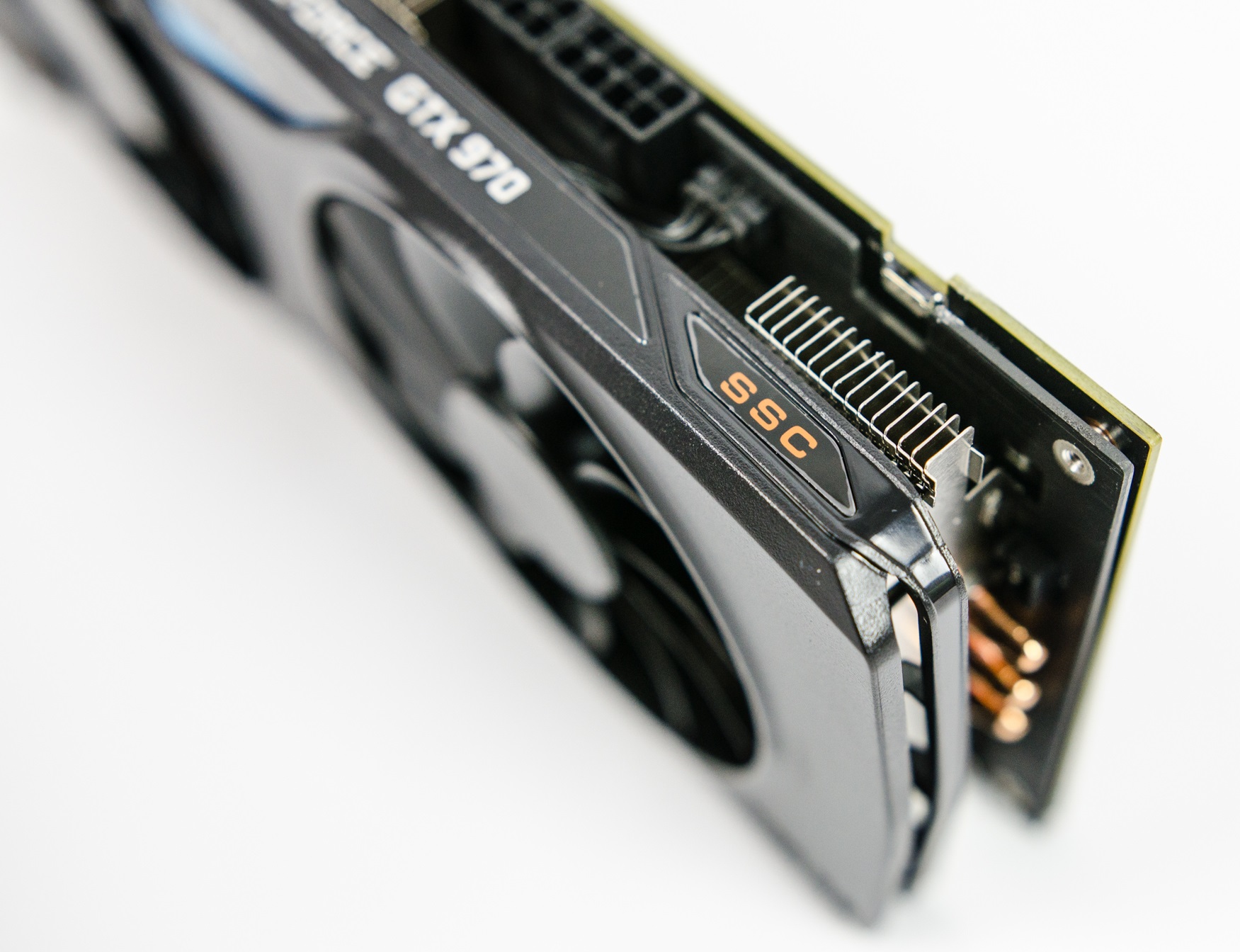Overclocking, Temps, & Noise
Overclocking
Fortunately overclocking these days is as easy as downloading a couple pieces of software. EVGA even have their own overclocking software called Precision X that is readily available to download for free from their website. The other piece of software that you’ll want to download is a test bench application such as the applications from Futuremark or another benchmark like Valley. Other good applications for stress testing is Folding@Home since it runs the GPU at 100% usage 24/7. Stress testing is important because more often than not a game does not utilize every bit of the GPU. GPU usage varies, as does the clock speed and load temperatures. By doing initial testing with a program like Fire Strike or Folding@home, applications that run the GPU at 100% usage for several hours, you can be sure that the GPU is absolutely stable. It’s generally recommended to run a bench test for twenty-four hours but unless you’re trying to max out your GPU to the very last Mhz, a few hours will be fine. Bear in mind that as every bench stresses the GPU slightly differently that being perfectly stable on one bench doesn’t mean being stable on every game at the same clock. Therefore the simplest method is to run some quick benchs to find where the card quickly breaks and then simply dial it back 20-40 MHz
This particular sample we were able to overclock a reasonable 75Mhz. That may not sound like a lot for a modern GPU, but the EVGA 970 SSC is already overclocked with a boost clock over 1.3Ghz. During benchmarks after we overclocked we were seeing the boost clock hit over 1.5Ghz! Considering that the GTX 970 isn’t the flagship GPU, and this is with air cooling, it’s pretty impressive. It was just a few short years ago that hitting the 1Ghz milestone with water cooling was a big deal, and now we’re able to hit 1.5Ghz with the stock air cooler!
The other bonus feature of the SSC is the ability to dial up the power throttle target higher than the lower end cards. In previous generations of GPUs there was often little reason to get anything but a reference card. The reference cards would fit with water blocks and the non-reference cards often only applied an overclock that you could do yourself anyway. These days manfacturers are offering more water blocks for non reference cards. NVidia has also aggresively fought against overclocking by introducing power limits that limit how hard you can push the references cards. The reference GTX 970 for example is limited to 106% of the power limit. EVGA’s SSC on the other hand shows a limit in software of 126%. If you also factor in that EVGA uses low power draw fans on the cooler which is included in the total power limit then that means even more room for overclocking. This is why we think EVGA claims 33% more power in their marketing slides. The extra VRM phases will also mean that that higher power will be handled better and more reliably in the long term.
Noise & Temperatures
With Nvidia developing enthusiast level GPUs that are low powered it’s allowed vendors like EVGA to develop after market coolers that have awesome features like turning the fans off completely when below 60C. For some people reduced noise levels is why they built their own computer. We are here to report that EVGA has developed a cooling solution that is truly impressive. Even on our open test bench that did not have any additional air flow on the GPU, the fans still were off more than they were on. The biggest revelation for us was when we realized how truly silent the ACX cooler is even when under 100% load for over 12 hours. We did mess with a custom fan profile to see how temps were outside of the default one configured by EVGA. Below you will find a graph of that data while playing Crysis 3 at 3840×2160.
While the default fan profile EVGA has set is excellent for silence, we didn’t find it optimal for gaming, especially when overclocking. Nvidia GPUs will throttle the boost clock when it hits a certain temperature in order to try and bring down the temperature; with the default fan profile we ended up running into some stability issues that we didn’t run into with the custom profile we setup.
Overall we were truly impressed by the noise levels. My test bench only has 1150 RPM near silent fans on the radiators and most of the time the GTX 970 SSC ACX2.0+ was even quieter then those already quiet fans. To put it in perspective the loudest component was the PSU.











[…] […]
Comments are closed.